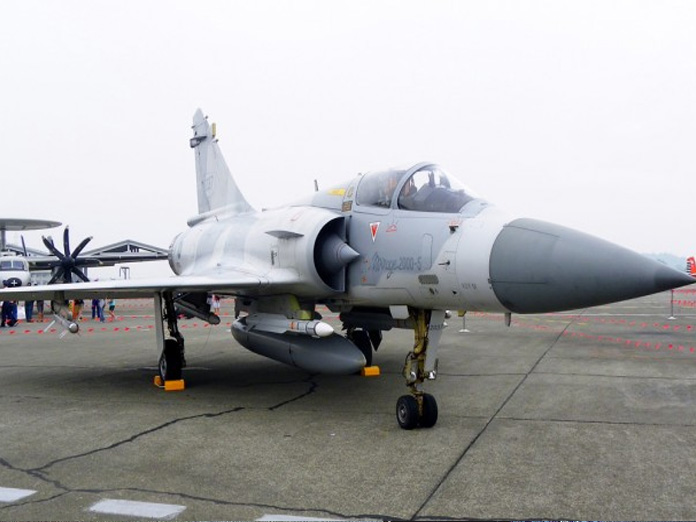Live
- PVKK IT Diploma College celebrates Freshers’ Day
- Politicos RISE to defend ‘Pushpa’
- Bhumi puja performed for Adani Junior College building
- Did Allu Arjun fight for India at border, asks CM Revanth
- CM Revanth, officials to inspect residential, Gurukul hostels today
- SSBs to be set up soon in Nellore
- TGPSC all set for holding Group-II exams
- Commissioner directs officials to ensure safe water supply amid heavy rains
- Youth urged to donate blood to save lives
- National Energy Conservation Week from today
Just In

No sooner the Mirage2000 fighter aircraft crashed on February 01, 2019 the Hindustan Aeronautics Limited HAL has started facing the bank of accountability cloud The two pilots, Squadron Leader Samir Abrol and Squadron Leader Siddhartha Negi, who were part of Indian Air Forces Aircraft and Systems Testing Establishment ASTE, were killed in an air crash on that fateful day
No sooner the Mirage-2000 fighter aircraft crashed on February 01, 2019 the Hindustan Aeronautics Limited (HAL) has started facing the bank of accountability cloud. The two pilots, Squadron Leader Samir Abrol and Squadron Leader Siddhartha Negi, who were part of Indian Air Force’s Aircraft and Systems Testing Establishment (ASTE), were killed in an air crash on that fateful day.
Over a period of time, the aircraft crash rate has surmounted in India. According to a report on air crashes in India, which took the statistics from 2011 to 2017 into account, the Armed Forces of India have recorded approximately 70 aircraft accidents that resulted in more than 80 causalities. All most all the Court of Inquiry reports identified two major reasons behind these crashes — technical defects and human error.
Soon after the recent fatal air crash, many reactions have inundated from eminent defence personalities. Hindustan Aeronautics Limited has been blamed mostly for the abrupt fatal crash of Mirage-2000 fighter jet. Palpably, all the fingers have been pointing towards the HAL. Thus, the eminent Defence PSU (DPSU) has been fully enclosed by the accountability cloud. There is no doubt that based on the previous statistics the crash was likely a technical issue. Nonetheless, without having a comprehensive Court of Inquiry (CoI) report in hand, HAL cannot be blamed just like that.
If we look into the history and growth of the Hindustan Aeronautics Limited, the company can be considered one and the same as the progression of Aeronautical industry in India. Hindustan Aircraft Limited was established on December 23, 1940, and has been into force for more than 78 years in the service of the nation.
After India’s independence, Aeronautics India Limited (AIL) was established in August 1963 as a fully owned company of the Government of India. Its main aim was to undertake the manufacture of the MIG-21 aircraft under licence. Even before AIL was incorporated, there was an Aircraft Manufacturing Depot (AMD) which was set up in 1960. The purpose of this Air Force unit was to produce the Airframe for the HS-748 transport aircraft. This Air Force unit was transferred to AIL in June 1964.
Subsequently, the Indian Government had decided to integrate Hindustan Aircraft Limited, with AIL with an idea to conserve resources in the field of aviation. The consolidation of the two companies i.e. Hindustan Aircraft Limited and Aeronautics India Limited was taken place on Oct 01, 1964, by an Amalgamation order issued by the Government of India.
The resulting organisation was named Hindustan Aeronautics Limited (HAL). This historical merger supported the activities of all the aircraft manufacturing units to be planned and coordinated in the most efficient and economical manner.
Based on the aforesaid facts, HAL should be considered as an organisation of great stature. Most of the employees who work on aircraft at HAL are the ex-employees of Indian Air Force. So, for obvious reasons, the technicians working at HAL are ultra skilled with a vast experience of hand on the job.
However, at a time when the aircraft crash rate is transcending, there arises an ill-omened need to analyse the two major reasons behind the crashes — technical defects and human error.
It is said rightly that nothing is eternal in this world. So, it should be very well agreed that every aircraft has to be out-dated when it cannot give its best. Normally, an airframe life for a fighter aircraft lies between 2500 to 8000 hours of flying. The airframe life varies between the cited values, depending upon the dissimilar design objectives and life expectancy objectives of each aircraft.
Though the airframe life is fixed to a certain value, some aircraft would have to be obsolete even before their airframe life is touched. This could be due to the substantial and optimal use of the aircraft. If not taken seriously, failures may result in structural damage, which is beyond economical repair.
Under certain circumstances, when the aircraft reaches its life expectancy, making the fretful aircraft obsolete and inducting a new aircraft in place of the obsolete aircraft is the one and the only option a country has. However, many countries opt to keep the obsolete aircraft in force through a life extension programme. Extending the life of an aircraft beyond the life expectancy should be the last option as evidently it results in air crashes. Many numbers of MIG-21 crashes has already proven the aforesaid fact.
In concluding words, it could be rightly said that the accident prevention programmes are giving additional thrust to find risk-prone areas specific to the aircraft fleets and operational environment to ensure safe practices and procedures. However, the lack of an intensive modernisation drive to replace ageing aircraft still remains a major problem.
(Dr Suman Kumar Kasturi - An Air Veteran & A Mass Communicator — Author of More than 10 Mass Media Books)

© 2024 Hyderabad Media House Limited/The Hans India. All rights reserved. Powered by hocalwire.com







